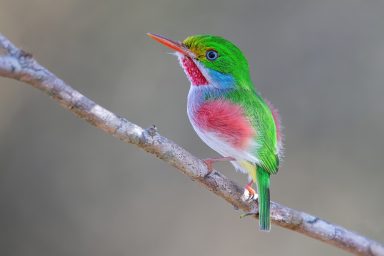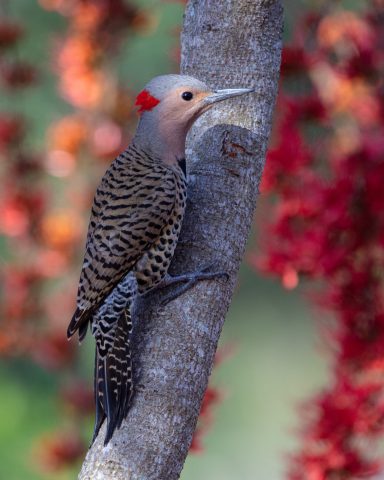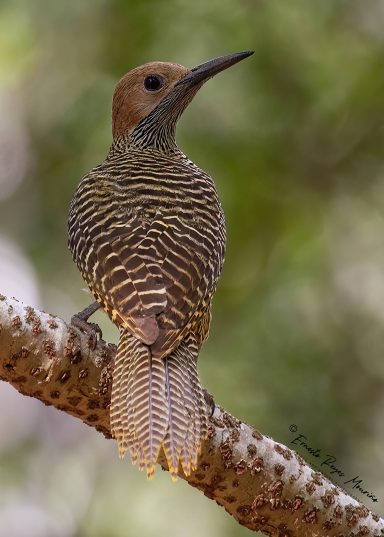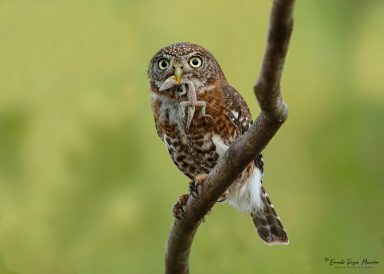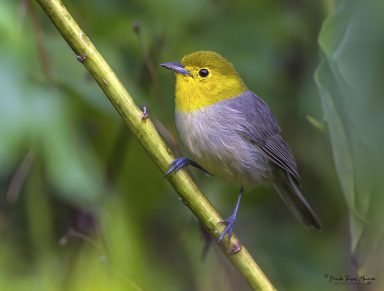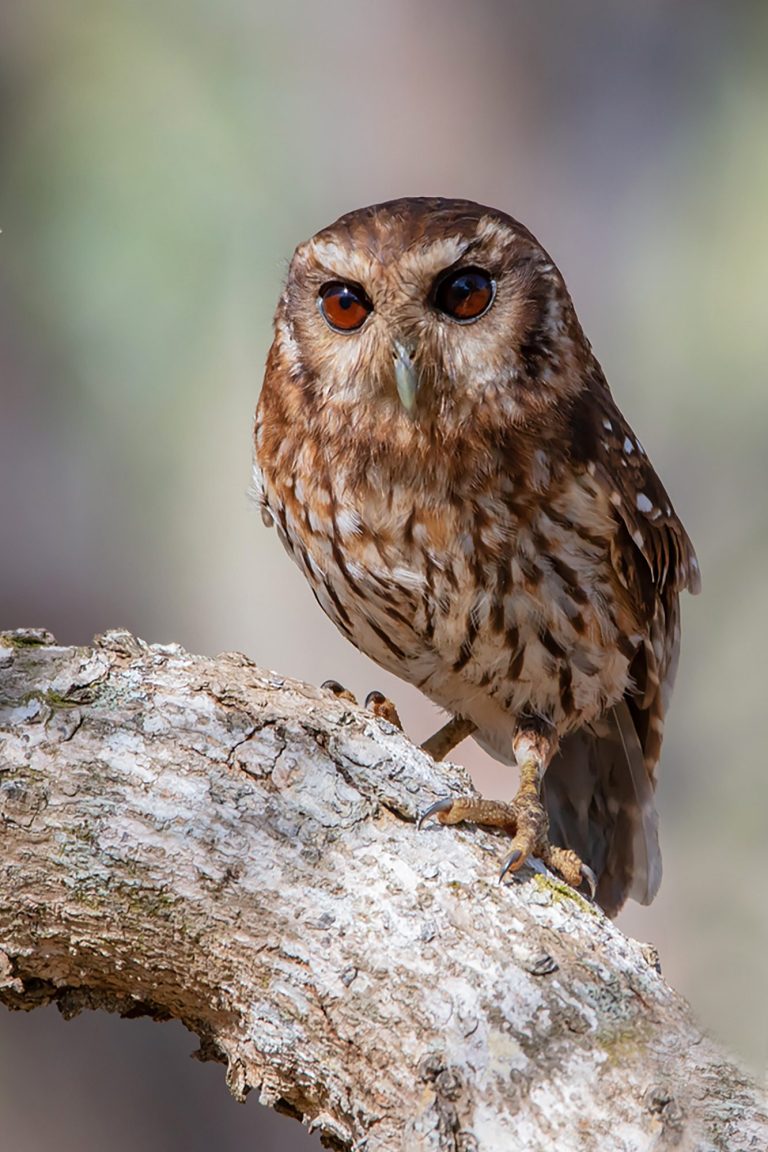
12-days Trip
Tour Leaders:
Ernesto Reyes & Tania Piñeiro
Group Size: 8 -10 pax
Tour Cost:
USD 3 500 double occupancy
USD 3 750 single occupancy
Day 1 (Havana & Viñales): Meet up with our Cuban bird guide, and departure to Viñales Valley, the land of tobacco farms and beautiful landscapes with limestone formations called mogotes. Bird watching along the way, looking for Snail Kites and waterbirds in dams built near to the highway. Dinner and check-in at B&B (2
nights).
Day 2 (Viñales): Morning birding nearby in Viñales National Park/ Parque de Viñales in pursuit of endemic Cuban Solitaire, Cuban Grassquit, Cuban Tody, Cuban Trogon, Cuban Blackbird, Cuban-Green Woodpecker, Western Spindalis as well as some migrant species. During the afternoon, search for the Olive-capped Warbler and Yellow-headed Warbler.
Day 3 (Playa Larga/Zapata): Early breakfast and departure to Zapata Swamp. By late afternoon we reach Playa Larga, a lovely little beach town on the Bay of Pigs. Zapata Swamp is the third largest wetland in the Americas and the region offers the best birding in Cuba. About 254 species have been recorded for Zapata. It is a Biosphere Reserve and a Ramsar Site, where it is possible to see more than 20 Cuban endemics. Check-in at B&B (3 nights) and dinner.
Day 4, 5 & 6 (Zapata): Excellent chance for Bee Hummingbird, Gray-fronted Quail-Dove, Key West Quail-Dove, Ruddy Quail-Dove, Cuban Parrot, Cuban Blackbird, Cuban Bullfinch, Loggerhead Kingbird, Bare-legged Owl and Cuban Pygmy Owl. The threatened Cuban Parakeet, Fernandina’s Flicker, and Blue-headed Quail-Dove are also likely.
Places to Visit:
Los Hondones an eco-village where the community is developing organic farming and planting fruit trees, great attractions for many endemic birds, such as the Cuban Parrot, Cuban Trogon, Cuban Tody, Great Lizard Cuckoo, Cuban Emerald and many migrants.
Las Salinas de Brito: Habitat is varied among low, dense forest, mangrove, marsh, and open wetlands. Here we are likely to encounter the endemic Cuban Black Hawk as well as numerous shorebird, seabird, and waterbird species, including American Flamingo, Roseate Spoonbills, Reddish Egret, Wood Stork, and Clapper Rail.
Santo Tomas a lovely and peaceful ride into the swamp via pole-powered boats. A classical place to see the Zapata Sparrow and Zapata Wren, among Cuba’s most limited range endemic birds. It’s a great location also to see White-crowned Pigeon, Great Lizard Cuckoo, Smooth-billed Ani, Cuban Tody, Cuban Bullfinch, and Purple Gallinule.
Day 7 (Zapata to Trinidad City): Morning departure heading east towards our destination with birding stops en route to look for the Cuban Gnatcatcher and Palm Crow. Cultural stops may include Cienfuegos UNESCO World Heritage Site. Cienfuegos, a bay-side city founded by French émigré and known as the “Pearl of the South,” has a Parisian feel to it with its parks, tree-lined boulevards and colonnades. Trinidad is a one-of-a-kind, perfectly preserved Spanish colonial settlement. We will have a little time to explore the cobblestone streets and enjoy the pastel- colored colonial mansions, plazas and churches (built from huge sugar fortunes) and laid-back atmosphere.
Day 8 (Trinidad to Cayo Coco): Today we make our way to Cayo Coco and nearby offshore cays on the northern (Atlantic) coast which provide great habitat for a diversity of waterbird species, including the West Indian Whistling-Duck, migrants, and restricted-range and endemic subspecies. The islands offer pristine white-sand beaches, mangrove flats, low coastal
scrub and crystal clear waters. We still stop en route to look for Snail Kite, White-cheeked Pintails, Fulvous Whistling-Ducks and
others. Check into our hotel on Cayo Coco (2 nights) and birding nearby.
Day 9 (Cayo Coco): Early morning birding on Cayo Paredón Grande, the most northeastern cay in the archipelago and one of Cuba’s important migratory landfalls. We will search for the Bahama Mockingbird, Cuban Gnatcatcher, Oriente Warbler, Gundlach’s Hawk, Scaly–naped Pigeon, Mangrove Cuckoo. Thick-billed Vireo and a subspecies of Zapata Sparrow are also target birds for the archipelago. Lunch at the hotel. The afternoon
will be spent spotting migratory birds on Cayo Guillermo and Cayo Romano. Cueva del Jabali is a great place to spot Key West Quail-Dove, Zenaida Dove, Cuban Tody, Oriente Warbler, La Sagra’s Flycatcher, Red-legged Honeycreeper and many migratory warblers.
Day 10 (Cayo Coco to Havana): Today we make our way back to Havana (~5 hrs) with brief birding stops and lunch en route. Check into your B&Bs in Havana, followed by dinner and
music/dancing (optional).
Days 11 (Havana): A full day in Havana with diverse cultural activities including a walking tour of Old Havana, old fashioned car ride, visits to art galleries and museums, historical buildings and
monuments, central park, walk on Malecón, shooting of canon at Cabaña Fort, street markets, etc. Farewell dinner
Day 12: Check-out and transfer to the Havana Intl Airport.
CUBA
Directions
HAVANA - VIÑALES NATIONAL PARK - ZAPATA BIOSPHERE RESERVE - TRINIDAD CITY - GARDENS OF THE KING.
Help us make a change
We need your consent to load the translations
We use a third-party service to translate the website content that may collect data about your activity. Please review the details in the privacy policy and accept the service to view the translations.

